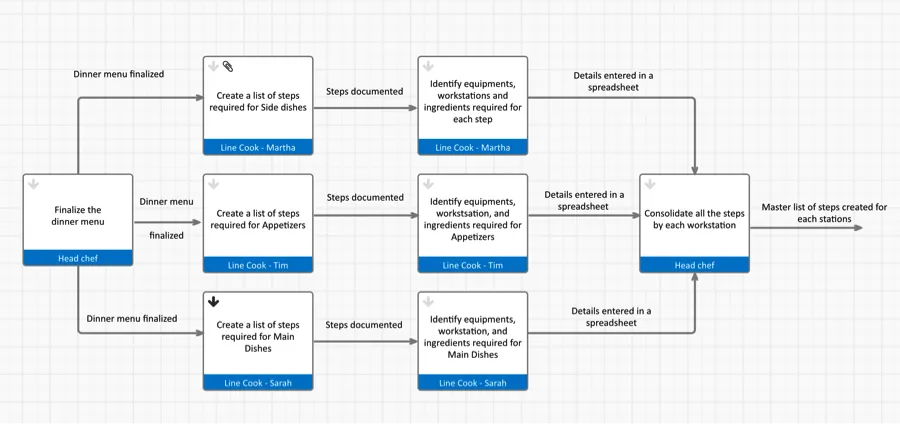Art, Mystery, and Processes of a Restaurant Kitchen
Blog: The Tibco Blog
One of the best things I love about San Francisco is that it’s a heaven for foodies like me. I simply relish the opportunity of having some of the best restaurants serving cuisines from all over the world. If you are like me, you must get amazed when the dish you wanted to try for so long gets served ready to be devoured. As food for thought, have you ever wondered about the teamwork and processes that go into the background of a restaurant kitchen before your favorite order reaches your table? I was recently chatting with a friend of mine who is a line cook in a famous San Francisco restaurant chain and what she told me made me respect these guys even more.The intent of this blog is not just to depict a typical day in a restaurant kitchen, but also to see how technology can be a great assistance in simplifying day-to-day operations.
The team in the kitchens of a good-size restaurant goes through detailed planning exercise and typically consists of people with various skills who get assigned specific activities at a particular workstation for efficient execution. Just as the music from the orchestra is electrifying when everyone plays in harmony led by the conductor, each dish turns out perfectly when everything runs on schedule, and everyone on the team has done their part thoroughly.
Apart from making sure that everyone is well aware of their duties, the chef has to be ready for any emergencies like food shortages or spills, turnovers in a team, a rise in sudden demand for a dish, etc. If the line cook has to find a replacement at the start of a busy weekend, they won’t have the time to walk the newbie through the entire process. A minor change can interrupt a well-planned kitchen. That’s where technology can help. A simple visual diagram that clearly defines and communicates the processes can avoid disruptions and allow smooth functioning, resulting in happy customers.
I decided to have some fun and map out processes that go behind planning and preparation in a restaurant kitchen using TIBCO Nimbus Maps.
Once the menu gets finalized, a restaurant kitchen goes through the following process to function efficiently:
1. Review every item on your menu:
As part of the detailed planning exercise, every dish on the menu is broken down into specific activities for each workstation. Stations are the work areas dedicated to a particular set of kitchen functions, such as prepping vegetables, cutting meats, making desserts, sautéing or grilling. Spelling out each menu item in detail ensures that you are not over buying or leaving out something important.
2. Consolidate the steps
Combine all the steps from step 1 by each station to identify bottlenecks and to find out if you would be relying heavily on a single workstation to execute the menu.
3. Quantify the volume
The next step is to quantify volume that each station will produce during service hours. This process is easy for an existing restaurant with a static menu, but a new restaurant will rely upon estimates.
4. Staffing each station
Next, assign staff for each workstation based on the workload identified in step 3.
5. Test drive the plan
To avoid any bottlenecks, it’s always important to dry run your process to make it full proof. This step is not required daily.
Here is quick preview of what a sample workflow would look like in TIBCO Nimbus Maps:

The reason I picked Nimbus Maps to plan out the work in the kitchen is not only because it lays out entire workflow in a simple yet powerful consumable visual palette, but it also helps in:
-Bringing new hires up to speed quickly
-Easily transition between changing shifts
-Documenting and communicating the steps in case of an emergency, such as spills leading to shortage and the like.
-Immediately updating the team with changes in the workflow
-Uploading documents to any step of the workflow. For example, a line cook can attach a recipe to a task “Prepare Clam Chowder.”
If you want to simplify some of your day-to-day operations and collaborate with others on your team, try TIBCO Nimbus Maps for free.